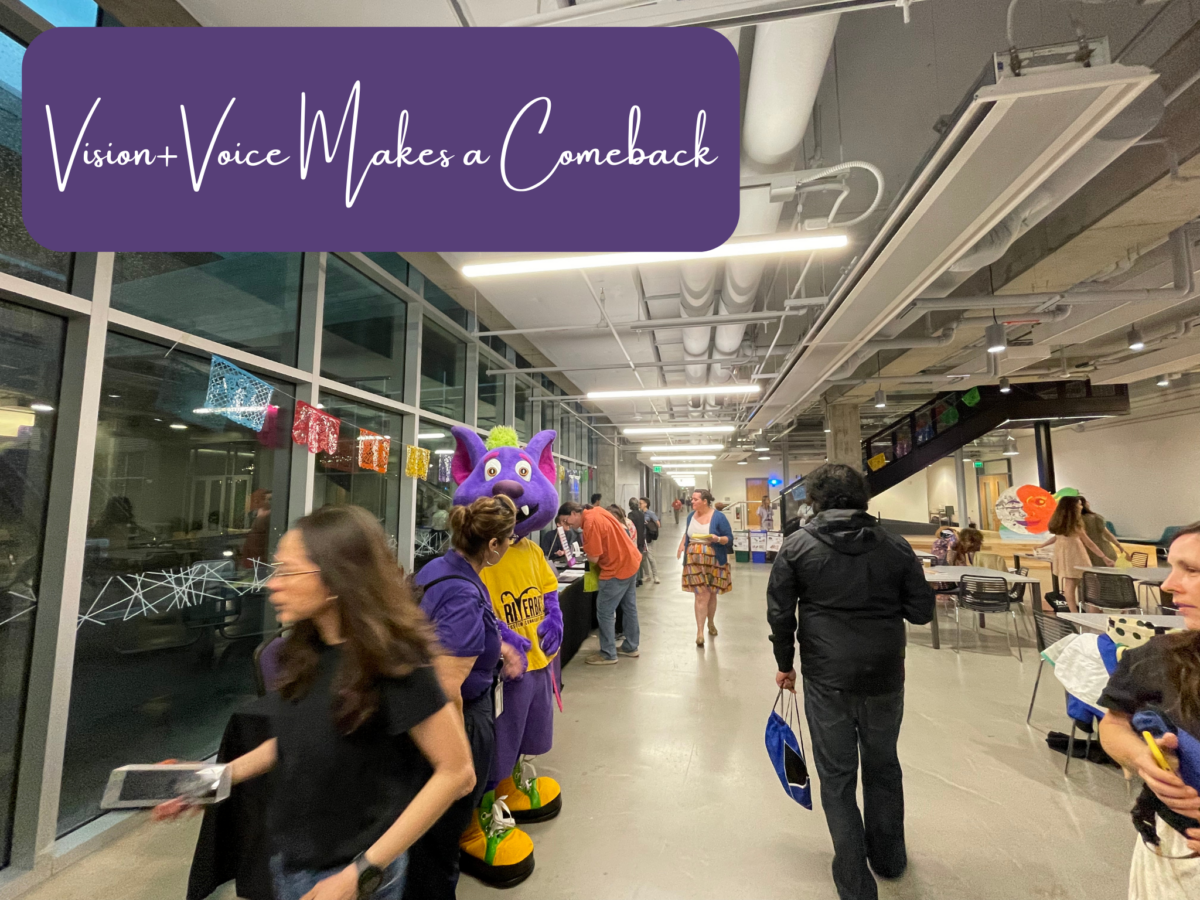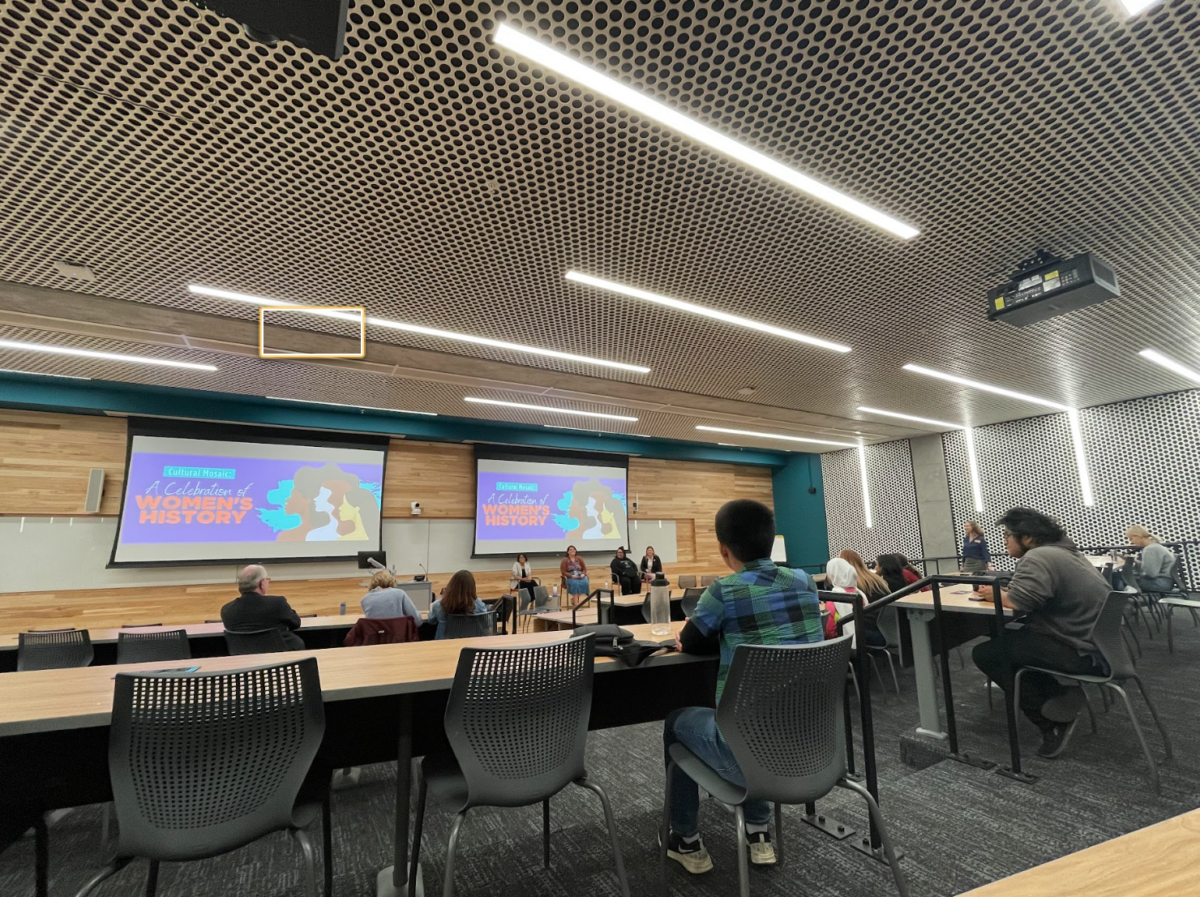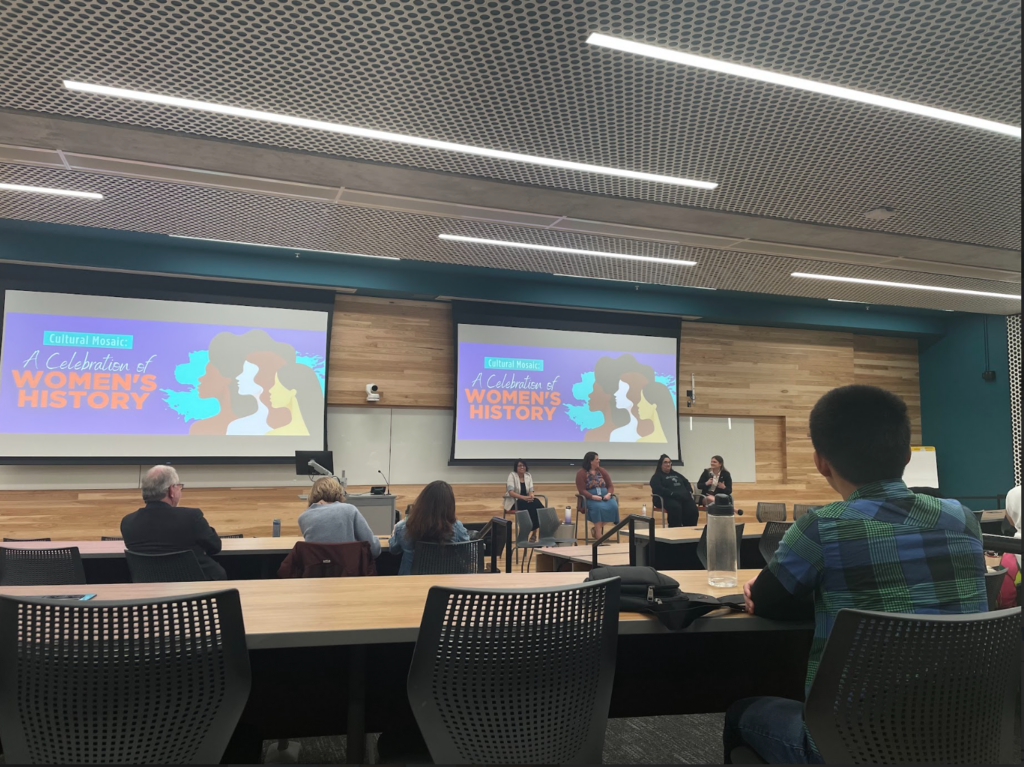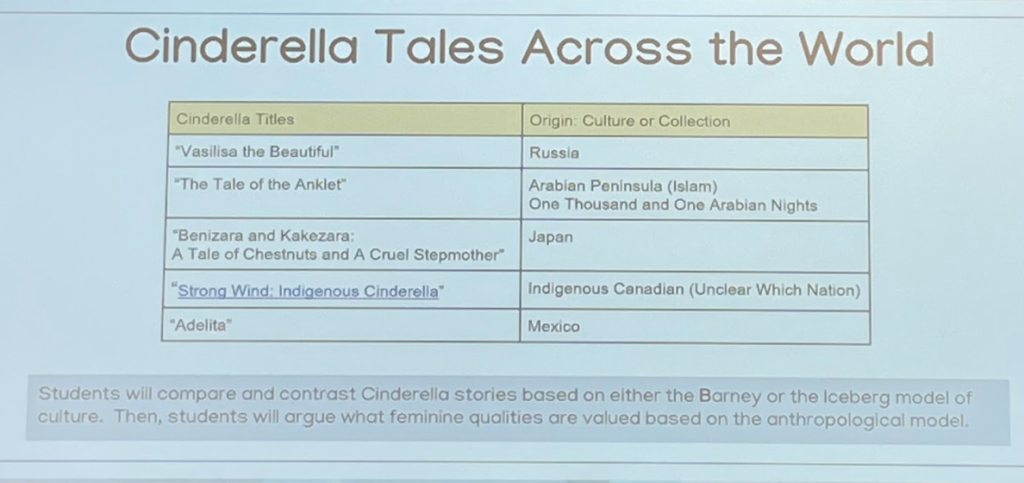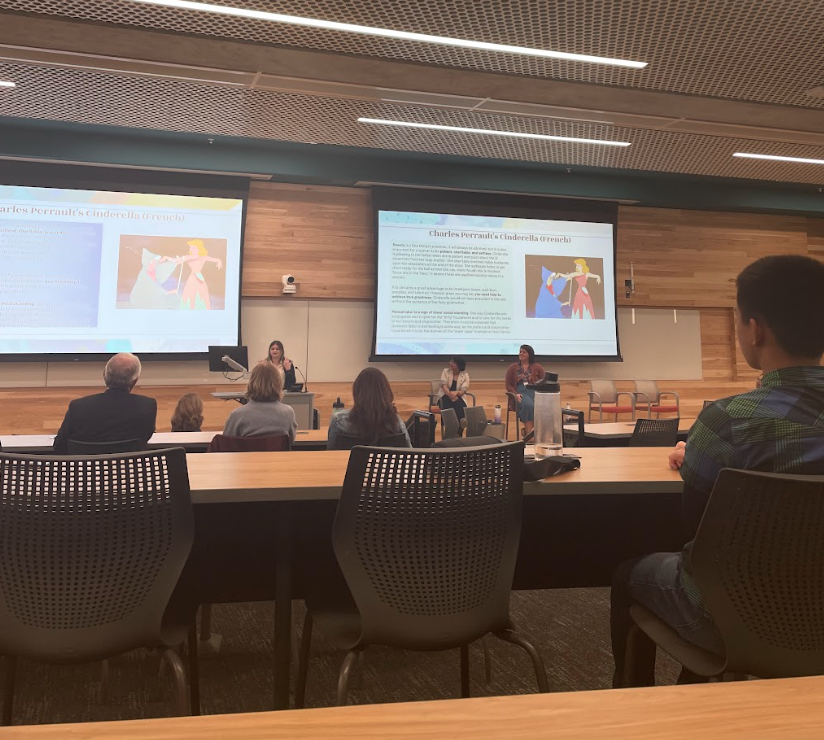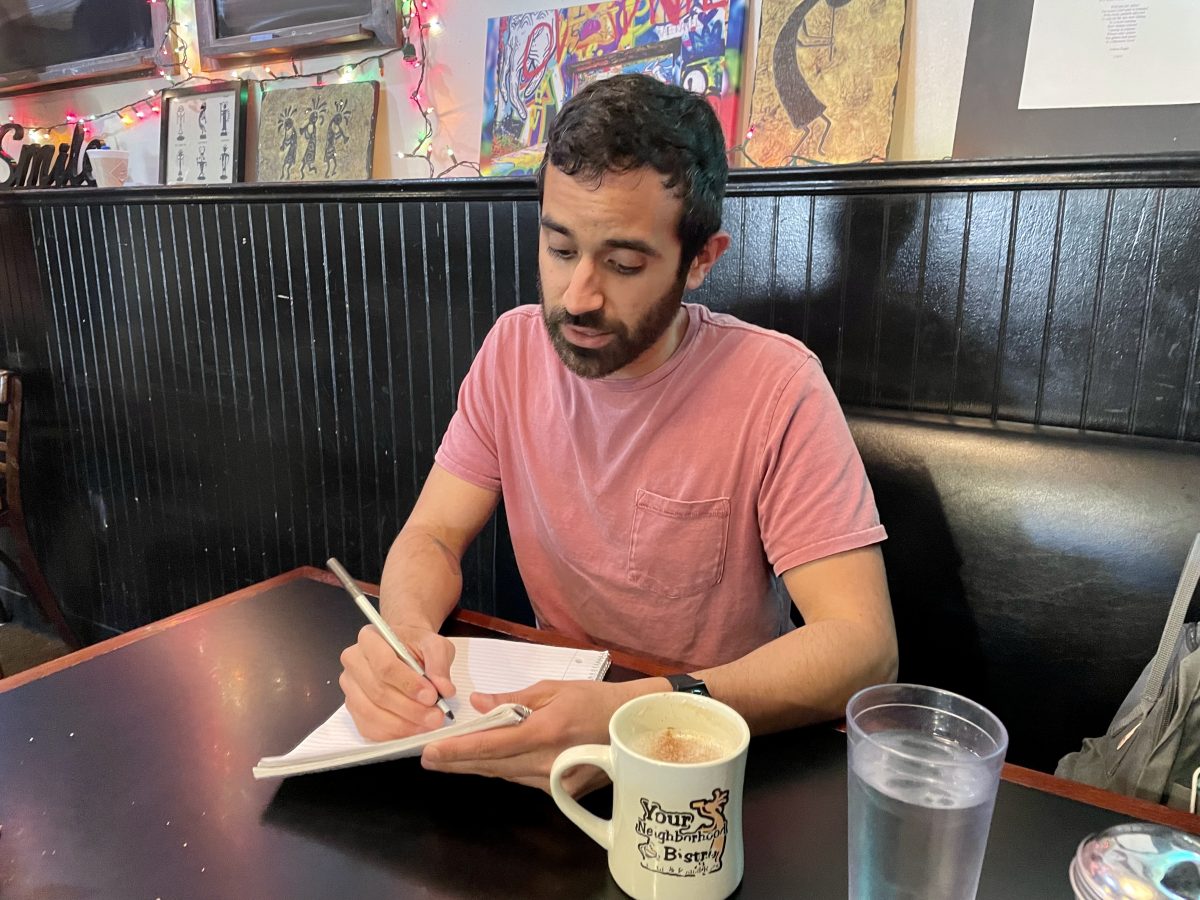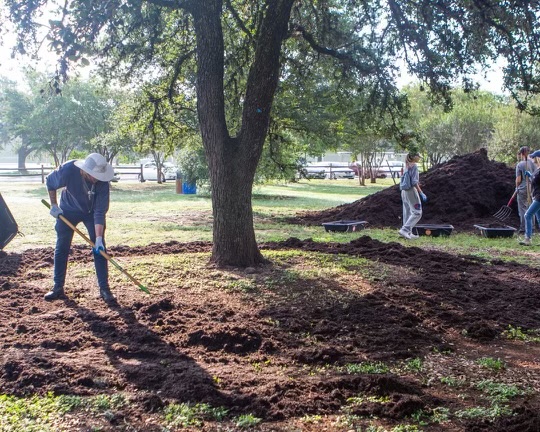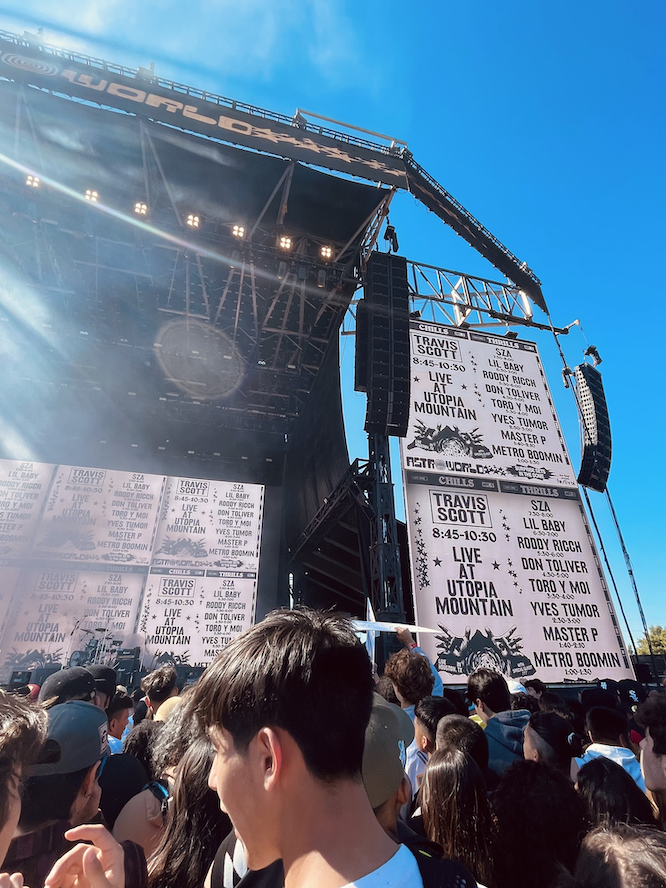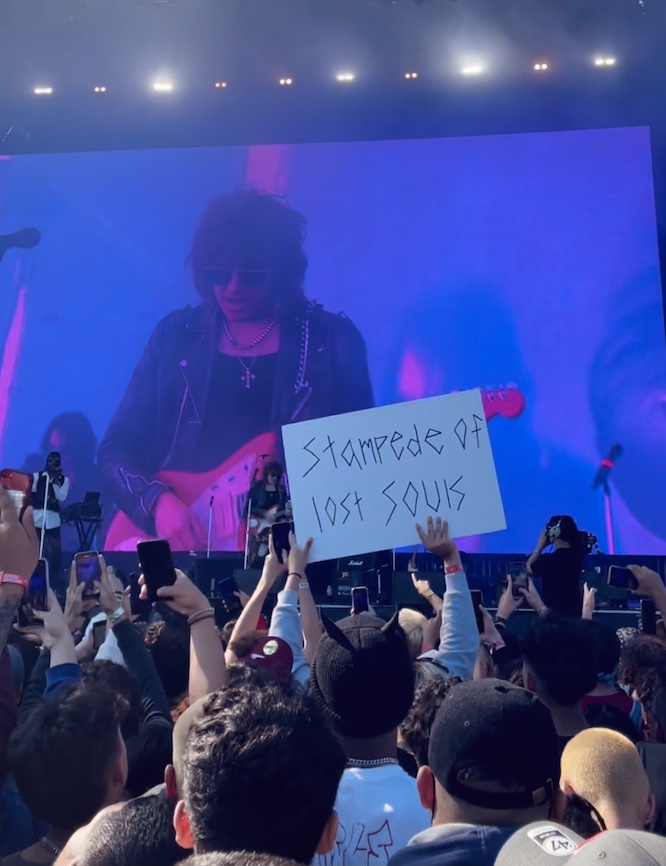By Angelica Ruzanova
Humans are storytelling creatures. From cave drawings of star clusters to our fast-paced appetite to connect in the digital terrain today, we discover the world and ourselves through waves of proliferating knowledge. Our curiosity makes us human, and Austin Community College aims to facilitate a space to embrace that.
On Friday, April 28, the liberal arts: humanities and communications department hosted the annual Vision+Voice Literary Festival at the Highland Campus showcasing poetry and creative writing from K-12 and ACC students. The event included an open mic and an award ceremony for winners of the League of Innovation and Cacciatore projects where each poem was read aloud by their author in the main presentation hall. Winners were individually invited to record their narration of the poems in the PBS studio across the building prior.
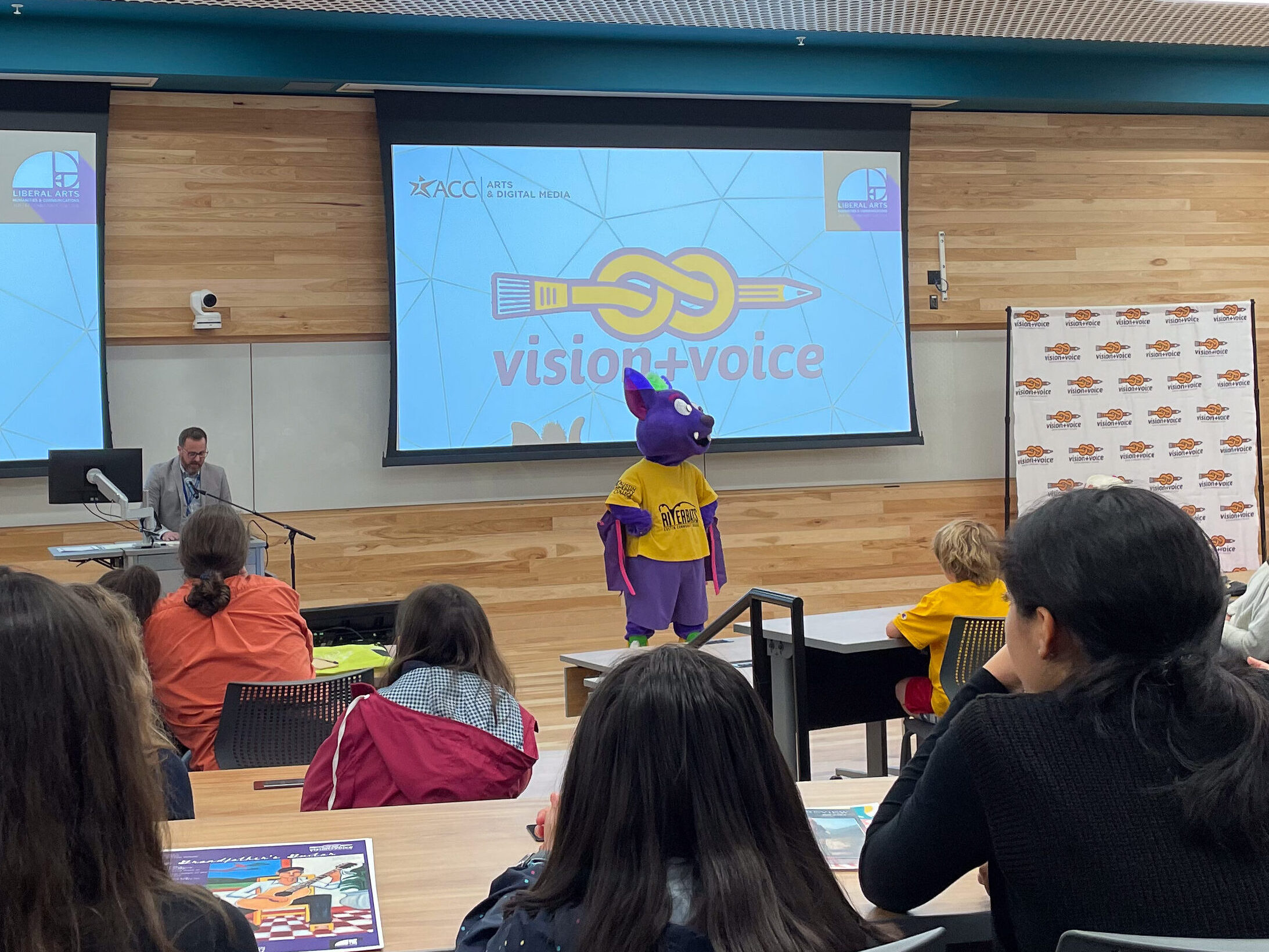
Moderated by Dean of Arts & Digital Media Perry Crafton, the event introduced special guests from the board of trustees, English and creative writing programs involved in judging the submissions.
Divided into grade levels, the winners received posters designed by ACC Digital Media students who visualized their own versions of each poem with chosen artwork, internally competing amongst themselves as well.
“We are witnesses to your answer. Your work is published, your voice is heard,” said Board of Trustees member Nora Comstock in her opening speech.
The festival was at the crossroads of all life paths. Poems from elementary grade poets exhibited raw imagery of the world as students shared experiences from school playgrounds to their thanksgiving dinner tables. Fifth-grader Mateo from Boone Elementary wrote:
“I am the green of the trees
The grass is as still as space
The shining sun with little gold lace
I wonder why the moon and sun are never together
Why the little small voice is always whispering hush
I hear the small breeze
and my breath being released
and the swings in a sea of rust
I see the green mixed with the night sky
of the chairs, the sky blue as a ripe blueberry
I want the yellow roses with rocks and sticks of all colors and the grass to brush my feet as I walk
I am the sky, the clouds, the sun, and moon
I am me”
…while Lyric, a first-grader from Maplewood Elementary, shared:
“I hit my head
I hit my head
I hit my head
I hit my head
I bit my bed
I bit my bed
I bit my bed
I bit my bed.”
The first through fifth grade category was met with ACC poetry and creative writing winners Shannon Williams and Seth Moloney. Both students read their respective poem and short story to the live audience of faculty and students.
The middle school arrangement explored friendships, maturity and coming of age in this big, complicated world. The faces of these readers had wide eyes as they touched on themes of identity, expectations and losing those around you in the midst of adolescent angst that permeated their words.
“Today, we are reminded of what the world was like when we were young, feeling experiences with new eyes.”
Eighth-grader Stella from Ann Richards School for Young Women Leaders read:
“…It is easy
To get lost here
In this maze of identical streets
The same house
The same yard
Over and over again
Blue and gray
Our world is fading
We are fading into the carpet
That covers old hotel rooms
The random dots on the carpet describe our whole universe
Everything we have ever known
Will be walked over
The carpet
Is the color of soldiers uniforms
The carpet
Is the color of the houses
The carpet
Is blue and gray.”
Then, for dessert, the existential contemplation of high school contestants and their physical and spiritual realities. These poems dealt with the pains and dreams of young adults unafraid to shed their vulnerability as 11th grader Claire from Stephen F. Austin High School expressed:
“The busy streets filled with cheer
Deep breathes, not a fear
Take a step, unlock the door
Dark sky with waves ashore
The feeling of unreality, it makes me feel fake
Take time for the value
No mistakes
Flying sheeps, counting stars
I want to stay forever where you can’t get scars
Peace and closure, feeling free
Close the door, use the key
Step out into the world where people feel pain
If only dreams were real where there are no complaints.”
The poetry was not solely limited to English work; Jhoselin from Austin Achieve Public High School was one of the winners for the 10th grade category with her work titled “Sentimentos No encontrados.” Part of the goal at Vision+Voice was to celebrate ESOL students through the Transpositions project for those taking English classes at ACC.
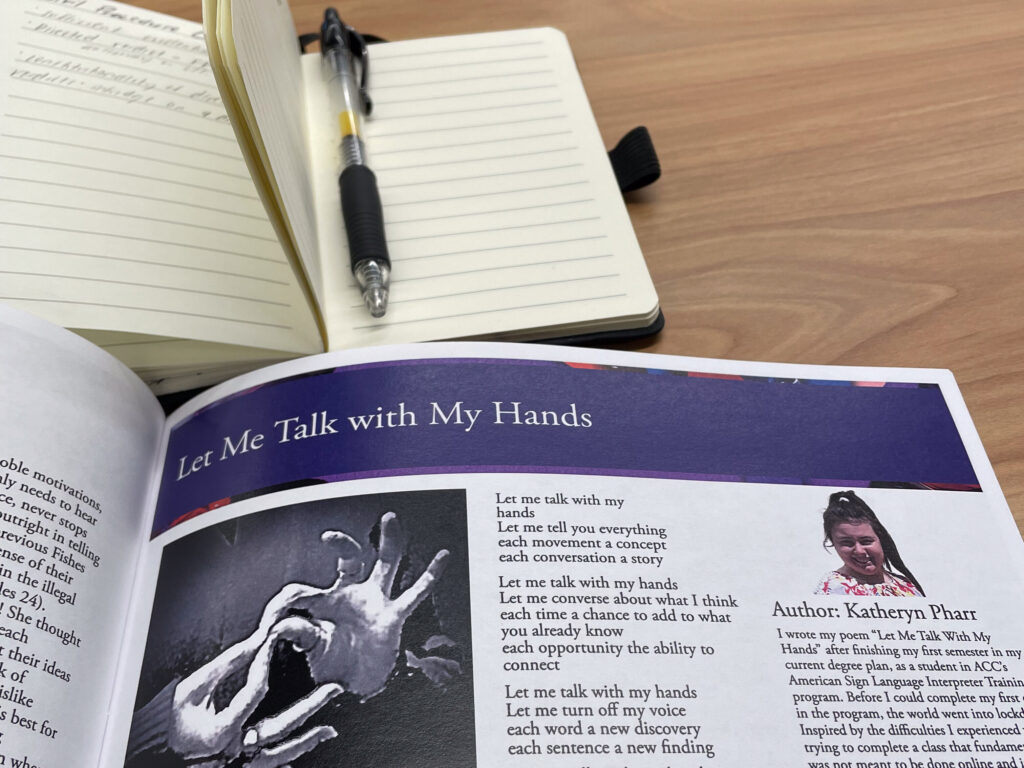
Outside of the presentation hall, the festival featured the first edition of a student academic journal Curiositas designed by Professor Watkins, showcasing composition, research and literary essays from current ACC students.
The Vision+Voice program began in 2013 but was halted during the last three years due to the pandemic. The festival is a revived opportunity for young poets to become published as they experience an authentic audience alongside writers both younger and older than themselves.
“We need to hear, listen, and connect,” said Creative Writing Department Chair Prudence Arceneaux in her introductory speech. “Today, we are reminded of what the world was like when we were young, feeling experiences with new eyes.”


